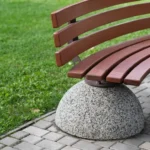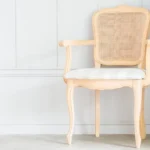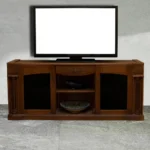When it comes to home construction and preservation, protecting wood from moisture is essential. One of the most effective materials for this job is copper flashing. This post explores whether copper flashing can effectively protect underlying wood, how it works, installation methods, and tips for maintaining its protective qualities over time.
What is Copper Flashing?
Copper flashing is a thin, durable metal sheet often installed in key areas of buildings, like roofs, windows, and doors to shield wood from water infiltration. Flashing is crucial because it forms a barrier, preventing water from seeping into vulnerable areas, which can lead to wood rot, mold growth, and other structural damage. Copper is a popular choice due to its long-lasting qualities and natural resistance to the elements.
Why Choose Copper Flashing to Protect Wood?
Copper offers unique benefits for wood protection. Here are a few reasons copper flashing is widely used:
- Corrosion Resistance: Copper naturally resists corrosion and can withstand various environmental conditions.
- Durability: Copper flashing can last over 50 years with minimal maintenance.
- Anti-Microbial Properties: Copper’s natural compounds deter mold and fungi, which can damage wood.
- Aesthetics: Copper adds a classic, attractive look to exteriors, developing a green patina over time.
How Copper Flashing Protects Underlying Wood?
Copper flashing serves as a protective barrier, shielding wood from moisture and rot.
Copper as a Water Barrier
Copper’s naturally impervious to water, creating a reliable barrier that blocks moisture from reaching the wood underneath.
Moisture Management
Copper flashing directs water away from vulnerable areas, reducing the risk of moisture infiltration that could damage wood.
Protective Oxidation Layer
Over time, copper forms a patina, adding a secondary layer of protection against corrosion and further shielding the wood.
Key Areas Where Copper Flashing is Used
To maximize protection, copper flashing is typically installed in areas prone to water exposure:
- Roof Valleys and Ridges: These are high-risk areas for water collection, especially during storms.
- Chimneys: Flashing around chimneys directs rainwater away from vulnerable roof areas.
- Window Sills: Copper flashing on sills protects wood from window leaks.
- Door Frames: Flashing above doors prevents water from seeping into the frame.

Installation Guide for Copper Flashing
Installing copper flashing correctly is key to protecting underlying wood. Here’s a step-by-step guide for DIY homeowners and contractors:
Tools and Materials Needed
- Copper flashing sheets
- Measuring tape
- Tin snips or metal shears
- Caulk gun and waterproof caulk
- Roofing nails and hammer
- Protective gloves
Step 1: Measure and Cut
Measure the area where you’ll be installing the flashing. Use tin snips to cut the copper sheet to fit precisely along the edges.
Step 2: Position the Flashing
Place the copper flashing along the edge of the wood or structure. Ensure it overlaps with adjacent flashing by at least 2 inches for complete coverage.
Step 3: Secure with Roofing Nails
Using roofing nails, secure the flashing into place. Ensure the nails are flush with the copper to avoid gaps where water can penetrate.
Step 4: Seal the Edges
Run a line of waterproof caulk along the flashing edges. This helps prevent any water from sneaking underneath and reaching the wood.
Tips for Maintaining Copper Flashing
Copper flashing can last for decades, but regular maintenance ensures it remains effective over time. Here are some tips for maintaining copper flashing in excellent condition:
- Clean Annually: Clear away debris and dirt, especially after storms.
- Check for Loose Nails: Re-secure any loose nails and add caulking if needed.
- Avoid Harsh Cleaners: Use mild soap and water to prevent damaging the patina.
- Inspect the Patina: Over time, copper will turn green, which is natural and protects against corrosion.
Common Issues with Copper Flashing
While copper flashing is a top choice for protecting wood, there can still be issues if not properly installed or maintained. Here’s what to watch for:
- Corrosion in Nearby Metals: Copper can accelerate corrosion in metals like aluminum and steel, so keep these materials separate.
- Improper Sizing: Flashing that’s too small or not overlapped correctly may not fully protect the wood.
- Patina Development: Although the patina protects copper, it can take away from the shiny look. If aesthetics are a concern, consider periodic cleaning.
FAQs
1. Does copper flashing require special maintenance?
Copper is low maintenance but benefits from occasional cleaning to maintain its appearance.
2. Will copper flashing corrode over time?
Copper does not corrode like other metals. Instead, it develops a patina that acts as a natural shield.
3. Can I install copper flashing myself?
Yes, many homeowners install copper flashing as a DIY project, though professional installation can be beneficial for complex areas.
4. How much does copper flashing cost?
Prices vary but generally range from $10–$20 per linear foot. It’s an upfront investment with long-term benefits.
Conclusion
Copper flashing is a reliable, durable solution for protecting wood against moisture, rot, and pests. It’s an excellent investment for homeowners looking to increase longevity and energy efficiency in their home structures. While the initial cost may be higher than alternatives, copper’s low maintenance and long lifespan make it worthwhile. Proper installation and occasional maintenance can help you enjoy copper’s protective benefits for decades, safeguarding your home with style and efficiency.









